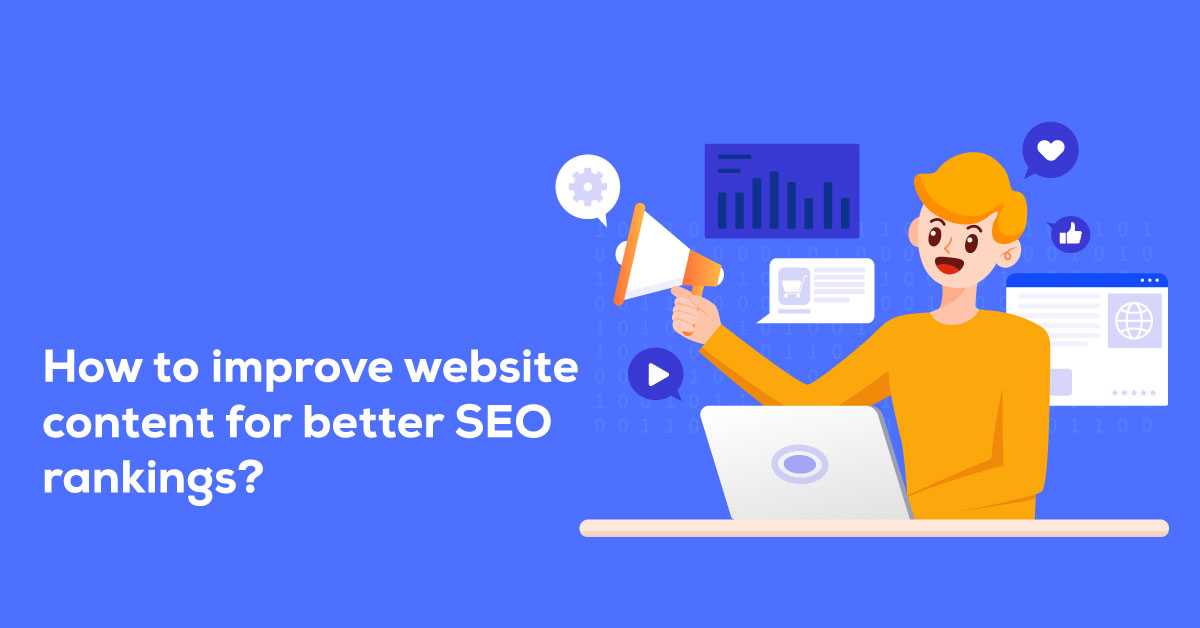Posted At: Aug 03, 2024 - 885 Views

The process of website content improvement is an ongoing process to enjoy or maintain a great SEO ranking, especially after Google algorithm updates. Let’s talk about SEO-optimized content writing and other requisites here.
Synchronized and optimized website content helps in faster loading time. Research shows that 40% of visitors abandon websites if it takes longer than 3 seconds to load, and 80% of abandoned visitors won’t return. It is necessary to keep high web traffic to make the Google algorithm recognize the popularity and adjust search ranking.
Content that is high quality, fresh, relevant, exciting, or newsworthy will keep visitors on the page longer. The content drives most of the impact on website performance, both on the web traffic and conversion. The main factors to be understood while developing unique content are the target audience, products and services, and how the competitor has showcased them on their website. The web contents are assembled from many elements i.e words, images, tags, media, and formatting. Each of these adds to the results in its way.
This article will provide details about some of the best practices and procedures for creating good website content that generates web traffic. Let’s examine element that contributes to SEO ranking.
- Copy: A well-written copy that is fresh, original, non-spammy, legible, and precise provides real value to the visitors. The copy should be clear and crisp with simple words and usages and free of complex vocabulary and syntax. If the copy causes people to stumble and falter, they will not stay on the website since they prefer to gather maximum information in a short period.
- Media and Visuals: Relevant and informative Visuals, Videos, and other elements make a message more memorable. We need to ensure they are optimized properly for improved SEO ranking. Images can be used to sneak in keywords by naming them accordingly. Adding video is a powerful content strategy and a great way to get visitors to stick around.
- Call-to-Action (CTA): A concise, clear, and actionable CTA provides direction to visitors. The CTAs should focus on one action at a time rather than directing different things from the same popup since it will confuse the visitor.
- Heading: It makes everything look more appealing and split up the content making it easier to read or skim.
- Layout: Neat, clean, organized, and uncluttered layout and mobile responsive design with bullet points and checklists make it easy for visitors to scan through the content.
- Code: should be as lightweight as possible to reduce the page load time. Search engines will take longer to crawl the site in case of excess code.
- Title tag: Title Tags are a powerful indication of relevance and are typically the link on a search results page. Keep the keywords predictable, and clear and make them emotional and front-loaded in the titles. Also, avoid putting the business name towards the end to avoid spoiling the SEO rating.
- Keyword Ranking: has a major impact on web traffic, leads, and conversions. The target keyword ideally appears in the URL, titles, subtitles, and body text using it naturally for a maximum of 5 times. Using LSI Keywords would be an advantage for both SEO and user experience.
- User search Intent: Contents optimized to match user search intent or user search queries attracts relevant leads with search engine optimization.
- Meta Descriptions Tags: Placing descriptive and engaging Meta descriptions and titles to clarify content encourages click-through rates from the search engine results page (SERPs). This will help in improving website ranking.
- Links: Internal linking of relevant articles within the domain and nurturing high-quality backlinks from other sites will help to increase web traffic. Internal links also provide an opportunity for the visitor to stay longer on the website.
- URL: Create clean, focused, and optimized URLs
Content Marketing is another way to improve search engine optimization. Content marketing materials like blogs, emails, podcasts, social media posts, etc., help to create awareness, and visits and result in improvement of website ranking. In a nutshell, periodic improvement in content is necessary for better SEO ranking. SEO-optimized content writing is art too!







